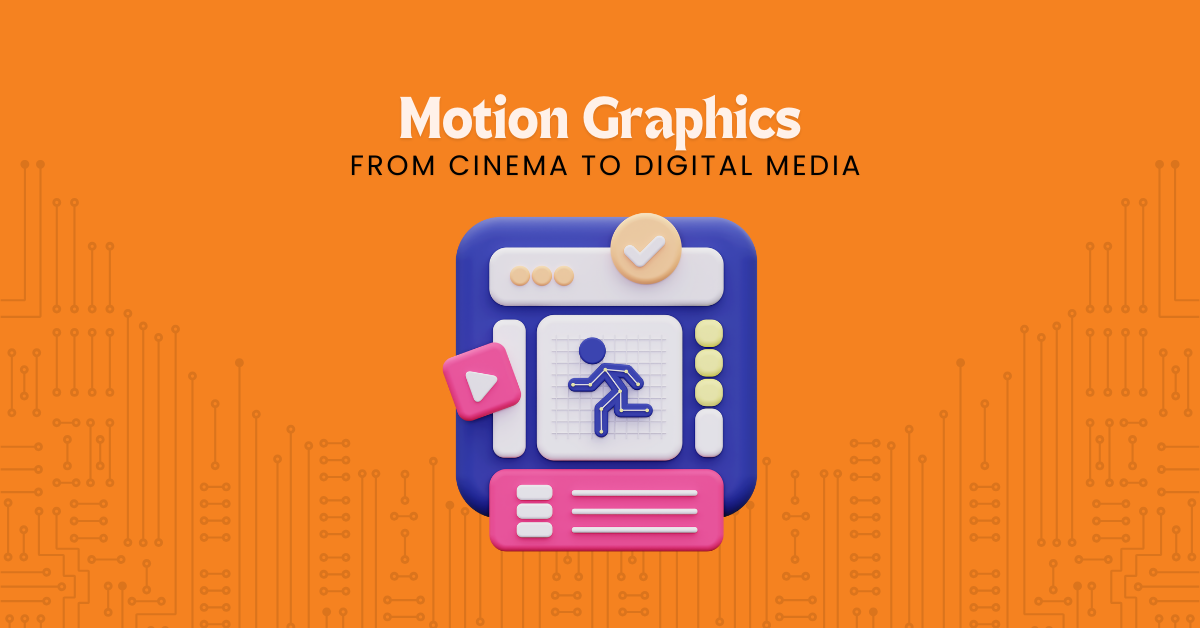The Evolution of Motion Graphics: From Cinema to Digital Media
May 30, 2024

Introduction
Motion graphics combine the art of graphic design with animation and cinematic techniques to create engaging visual narratives. This dynamic form of visual communication has seen a tremendous evolution, from its rudimentary beginnings in film to its sophisticated applications in digital media today. In this blog, we will explore the journey of motion graphics, highlighting key technological advancements and cultural shifts that have shaped its current landscape.
The Origins of Motion Graphics
Early Experiments in Film
The roots of motion graphics can be traced back to the early 20th century, with artists and filmmakers experimenting with techniques to create animated titles and sequences in films. One of the pioneers, Saul Bass, revolutionized film titles in the 1950s and 1960s with his dynamic and engaging designs, setting the stage for the use of motion graphics as a tool for storytelling.
Technological Advances in Animation
The introduction of computers and digital technology in the late 20th century marked a significant milestone for motion graphics. Software developments such as Adobe After Effects, which debuted in the early 1990s, allowed designers to create detailed animations and visual effects that were previously impossible or very costly to produce.
The Digital Revolution
Rise of Television and Advertising
As television became a household staple, the demand for motion graphics surged with the need for commercials, channel idents, and program titles. This era saw motion graphics becoming more mainstream, with studios dedicated to producing animated graphics and visual effects for the burgeoning television industry.
Impact of the Internet and Social Media
The explosion of the internet and later, social media platforms, further expanded the scope and demand for motion graphics. Digital platforms required content that could capture the viewer’s attention quickly and effectively. Motion graphics proved to be an excellent tool for creating compelling and informative content that was also highly shareable.
Current Trends and Future Directions
Integration with VR and AR
The latest developments in virtual reality (VR) and augmented reality (AR) are opening new frontiers for motion graphics. Designers are now exploring ways to integrate motion graphics into 3D and immersive environments, providing a more interactive and engaging experience for users.
The Role of AI in Motion Graphics
Artificial intelligence is beginning to play a role in motion graphics by automating some aspects of the design process and enabling more personalized content. AI can analyze user data to tailor animations and graphics to individual preferences, enhancing the user experience.
Sustainability in Motion Graphics
As digital media consumption grows, so does the energy consumption associated with it. The motion graphics industry is becoming more conscious of its environmental impact, leading to more sustainable practices in the production and delivery of digital content.
Conclusion
The evolution of motion graphics is a testament to the blend of art and technology, constantly adapting to new tools and media landscapes. As we look to the future, motion graphics will continue to play a crucial role in how we consume information and entertainment, pushing the boundaries of creativity and interaction. For designers and creatives, staying informed and adept at the latest technologies in motion graphics will be essential to harnessing the full potential of this dynamic field.
For those inspired by the evolution and potential of motion graphics, Prism Multimedia offers a comprehensive course designed to equip students with the skills and knowledge necessary to excel in this vibrant field. Whether you’re starting from scratch or looking to enhance your existing skills, this course covers everything from the basics of animation and design principles to advanced techniques in After Effects, Illustrator, and more.
Participants will engage in hands-on projects that mimic real-world scenarios, ensuring they gain practical experience alongside their theoretical learning. By the end of the course, students will have a professional portfolio of work showcasing their ability to create compelling and innovative motion graphics.
If you’re ready to dive into the world of motion graphics and turn your creativity into a career, consider enrolling in Prism Multimedia’s Motion Graphics course. It’s an investment in a future where you can be at the forefront of digital media design and innovation.

